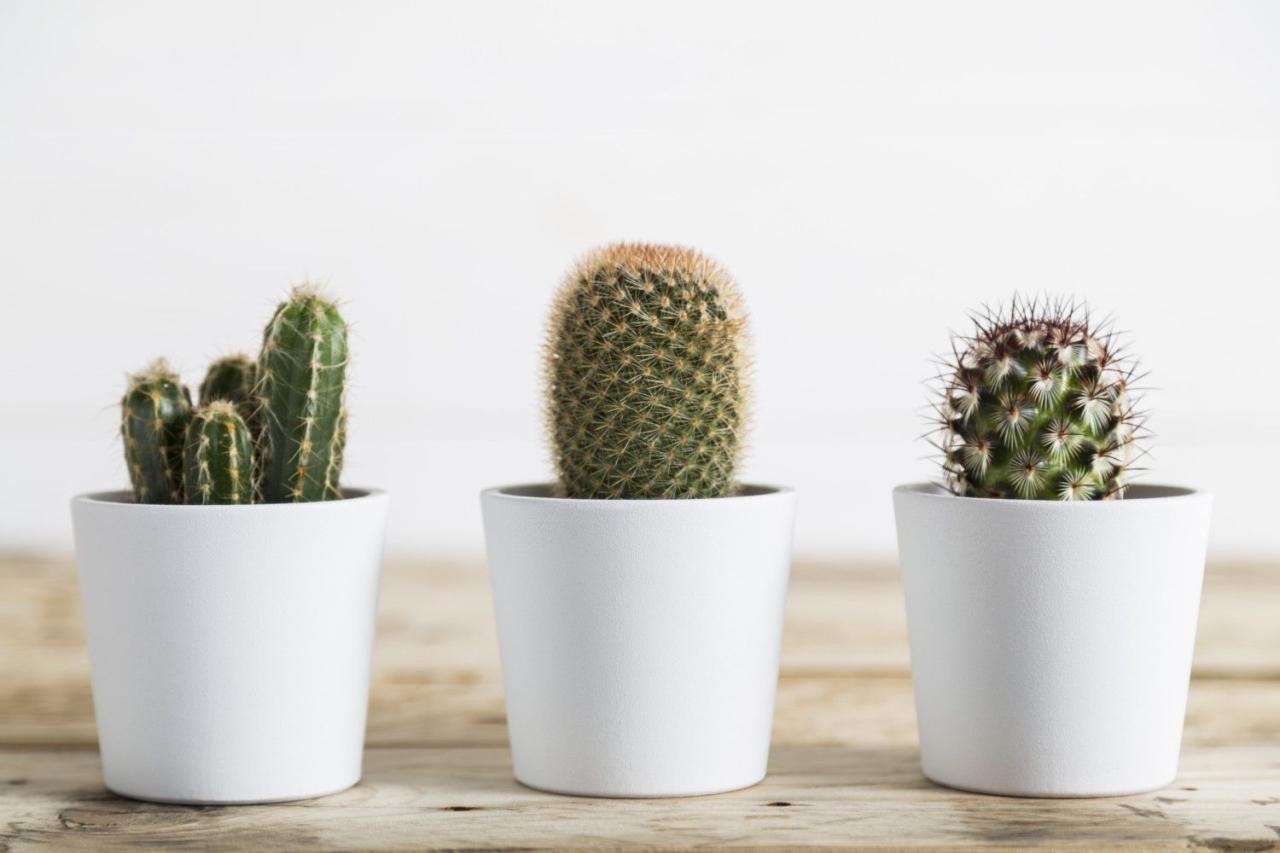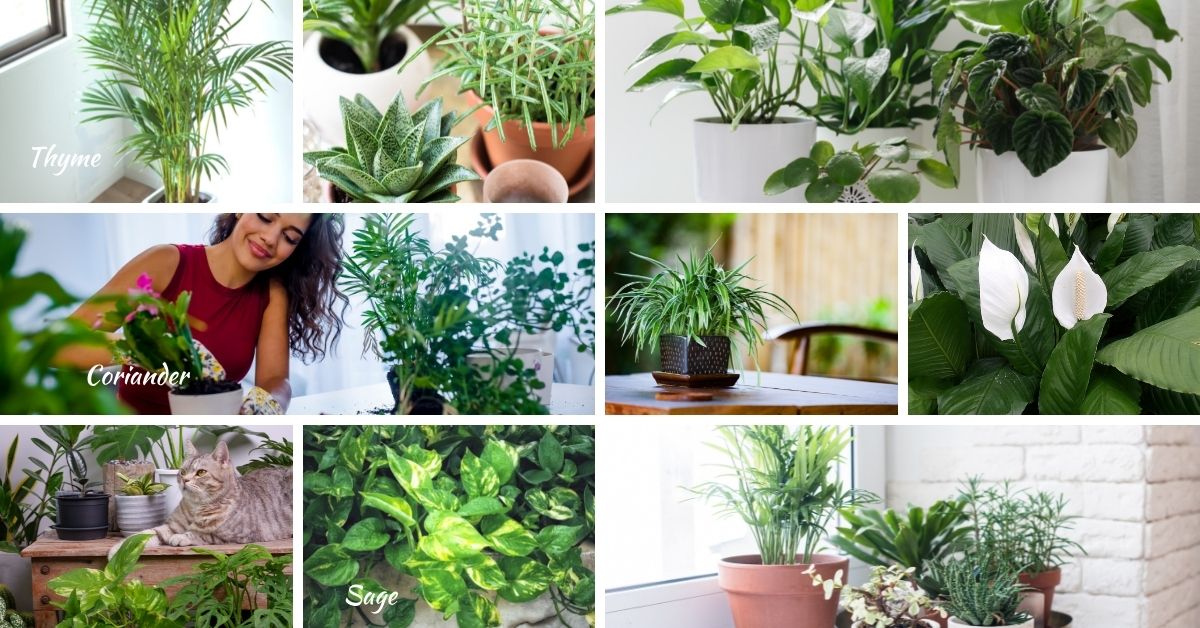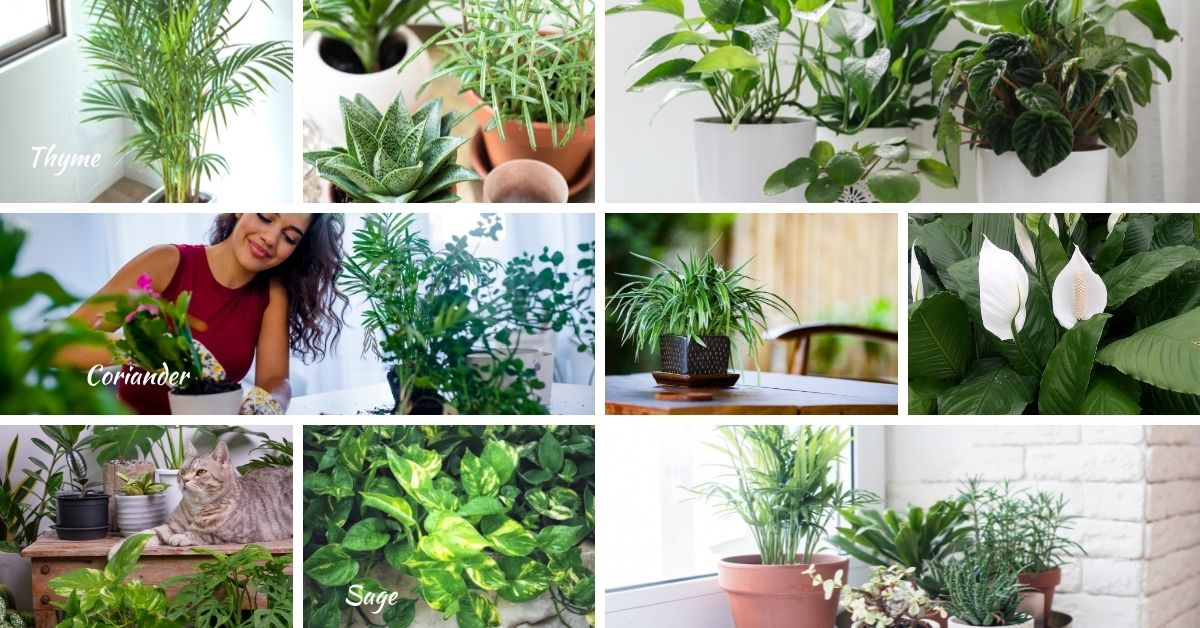Bringing nature indoors is a wonderful way to enhance your living space, and what better way to do so than with houseplants? Best Houseplants for Beginners That Purify Air offer a fantastic starting point for those new to the world of indoor gardening.
Not only do they add a touch of greenery and vibrancy to your home, but they also contribute to a healthier environment by purifying the air you breathe.
Choosing the right plants can make all the difference in creating a thriving indoor jungle. Beginner-friendly options are key, as they are more forgiving of occasional care mishaps and provide a solid foundation for developing your green thumb.
Introduction

Bringing nature indoors is more than just a design trend; it’s a way to enhance our well-being and create a healthier living space. Houseplants offer numerous benefits, from improving air quality to reducing stress and boosting productivity. Choosing beginner-friendly houseplants is crucial, especially for those new to plant parenting, as it ensures success and encourages continued plant ownership.
While many houseplants are known for their air-purifying qualities, some also lend themselves to spooky Halloween decor. If you’re looking for a unique way to add a touch of fright to your home, consider incorporating these plants into your design.
For a truly chilling kitchen, check out How to Style Your Kitchen With Creepy Halloween Houseplants. But even if you prefer a more subtle approach, these plants can still add a touch of eerie elegance to any space, while also providing the added benefit of cleaner air.
The Importance of Air Purification
Indoor air quality is often overlooked, yet it significantly impacts our health. Modern homes and offices are often sealed tight, trapping pollutants from everyday sources like cleaning products, furniture, and even our own activities. Houseplants play a vital role in purifying the air by absorbing harmful toxins and releasing oxygen.
This natural air filtration process creates a healthier and more refreshing environment, particularly beneficial for those with allergies or sensitivities.
Best Houseplants for Beginners That Purify Air
Bringing nature indoors isn’t just about aesthetics; it can significantly improve your indoor air quality. Certain houseplants are natural air purifiers, effectively removing harmful pollutants and creating a healthier environment. This article will guide you through some of the best air-purifying houseplants for beginners, making it easy to enhance your home’s atmosphere while enjoying the beauty of nature.
Top Air-Purifying Houseplants for Beginners
Choosing the right houseplant can be daunting, especially for beginners. The plants listed below are known for their air-purifying abilities and their relatively easy care requirements, making them ideal for those starting their indoor gardening journey.
Plant Name |
Description |
Air-Purifying Properties |
Care Requirements |
|---|---|---|---|
Snake Plant (Sansevieria trifasciata) |
The snake plant is a popular choice due to its striking appearance and resilience. It features stiff, upright leaves that can be green, yellow, or variegated. The leaves are typically sword-shaped, reaching heights of up to 4 feet. |
The snake plant effectively removes formaldehyde, benzene, and xylene from the air. |
This plant thrives in bright, indirect light but can tolerate low light conditions. Water sparingly, allowing the soil to dry out completely between waterings. |
Peace Lily (Spathiphyllum) |
The peace lily is known for its elegant white flowers that resemble flags. It features glossy, dark green leaves that are oval-shaped and can grow up to 2 feet long. |
Peace lilies are highly effective at removing ammonia, formaldehyde, and benzene from the air. |
Peace lilies prefer bright, indirect light and consistently moist soil. Avoid letting the soil dry out completely. |
Spider Plant (Chlorophytum comosum) |
Spider plants are characterized by their long, slender leaves that cascade downwards, resembling spider legs. The leaves are typically green with white stripes, and they can grow up to 2 feet long. |
Spider plants effectively remove carbon monoxide, formaldehyde, and xylene from the air. |
Spider plants thrive in bright, indirect light and prefer moist soil. Water regularly, allowing the top inch of soil to dry out between waterings. |
ZZ Plant (Zamioculcas zamiifolia) |
The ZZ plant is known for its glossy, dark green leaves that are arranged in clusters. It features a unique, almost sculptural appearance and can tolerate a wide range of conditions. |
ZZ plants effectively remove formaldehyde, toluene, and xylene from the air. |
ZZ plants are incredibly tolerant of low light and infrequent watering. They prefer well-draining soil and can withstand periods of drought. |
Common Beginner Mistakes and Solutions
Starting your journey with houseplants can be exciting, but it’s common to encounter some hurdles along the way. Don’t worry; these are usually due to common mistakes that are easily rectified with a little knowledge and practice. This section will explore some frequent beginner errors and provide solutions to help you become a successful plant parent.
Overwatering
Overwatering is one of the most common mistakes beginners make. It’s easy to get carried away and give your plants too much water, especially when you’re eager to see them thrive.
- Signs of Overwatering:Yellowing leaves, wilting, soggy soil, and a musty smell are all signs of overwatering. The roots may also rot, leading to further plant decline.
- Solutions:The best way to avoid overwatering is to let the soil dry out completely between waterings. Check the soil moisture with your finger; if it feels dry to the touch, it’s time to water. Use pots with drainage holes to allow excess water to escape.
Underwatering
While overwatering is a common issue, underwatering can also be detrimental to your plants. This often occurs when you forget to water or when the soil doesn’t retain moisture well enough.
- Signs of Underwatering:Dry, crispy leaves, wilting, and brown leaf tips are all indicators of underwatering. The soil will feel completely dry to the touch.
- Solutions:Water your plants thoroughly when the soil is dry. Allow the water to drain out of the drainage holes. You may need to water more frequently during the warmer months or when the plant is actively growing.
Pest Infestations
Pests can be a common problem for houseplants, especially if they’re brought indoors from outdoors or if they’re kept in humid environments.
- Common Pests:Common houseplant pests include aphids, mealybugs, spider mites, and scale.
- Solutions:Regularly inspect your plants for signs of pests, such as sticky residue, webbing, or tiny insects. You can use insecticidal soap or neem oil to treat pests. Isolate infected plants to prevent the spread of infestation.
Tips for Success
Cultivating thriving houseplants is a rewarding experience, and with a few key tips, you can create a flourishing indoor garden. By understanding the fundamental needs of your plants, you can ensure their health and longevity.
Choosing the Right Pots and Soil
Selecting the appropriate pot and soil is crucial for your plant’s well-being. The pot’s size and material influence drainage and root development, while the soil provides essential nutrients and moisture retention.
- Pot Size:Choose a pot that is slightly larger than the plant’s root ball, allowing for room for growth. A pot that is too large can lead to overwatering, while a pot that is too small can restrict root development.
- Pot Material:Terracotta pots are porous and allow for good drainage, but they can also dry out quickly. Plastic pots retain moisture longer, but they can sometimes lead to overwatering if not monitored closely.
- Soil:A well-draining potting mix is essential for most houseplants. Look for a mix that contains peat moss, vermiculite, and perlite, which promote aeration and drainage.
Importance of Proper Lighting and Ventilation
Light and air circulation are essential for plant growth and health. Providing adequate light and ensuring proper ventilation can significantly impact your plants’ vitality.
While selecting the best houseplants for beginners that purify air, consider their seasonal versatility. For instance, snake plants, known for their air-purifying qualities, can also be incorporated into festive Halloween decor. You can learn how to decorate your porch with Halloween-themed houseplants, including snake plants, by checking out this helpful guide: How to Decorate Your Porch With Halloween-Themed Houseplants.
This guide will show you how to transform your porch into a spooky and stylish space. Returning to your air-purifying plants, remember that proper care, including regular watering and adequate sunlight, will help them thrive and continue to improve your indoor air quality.
- Light:Most houseplants thrive in bright, indirect light. Avoid placing them in direct sunlight, which can scorch their leaves. If your home lacks sufficient natural light, consider using grow lights to supplement their needs.
- Ventilation:Good air circulation helps prevent fungal diseases and pests. Open windows regularly, especially during the warmer months, to allow fresh air to circulate.
Benefits of Using Plant Fertilizers and Other Care Products
Plant fertilizers and other care products can provide essential nutrients and help maintain the health of your plants. By understanding their benefits, you can choose the right products to meet your plants’ needs.
- Fertilizers:Fertilizers provide essential nutrients that plants need for growth, such as nitrogen, phosphorus, and potassium. Choose a balanced fertilizer specifically designed for houseplants and follow the manufacturer’s instructions for application.
- Pesticides:Pesticides can help control pests that may infest your plants. Choose organic pesticides whenever possible to minimize harm to your plants and the environment.
- Fungicides:Fungicides can help prevent and treat fungal diseases that can affect your plants. Choose a fungicide specifically designed for houseplants and follow the manufacturer’s instructions for application.
Resources for Further Learning

Your journey into the world of houseplants doesn’t end here. There’s a wealth of information and resources available to help you become a true plant parent. Whether you’re looking for specific plant care tips, inspiration for new additions to your collection, or simply want to connect with fellow plant enthusiasts, there are numerous avenues to explore.
Reputable Websites and Books
These resources offer comprehensive information and guidance on various aspects of houseplant care, from choosing the right plants to troubleshooting common issues.
- The Royal Horticultural Society (RHS):A renowned organization dedicated to promoting horticulture, the RHS website offers a vast library of information on houseplants, including care guides, plant identification tools, and gardening advice.
- Missouri Botanical Garden:This world-class botanical garden provides an extensive online resource for houseplant enthusiasts, covering topics like plant selection, propagation, and pest control.
- The Spruce:This website offers practical and informative articles on houseplants, covering everything from basic care tips to advanced techniques like propagation.
- Houseplant Journal:This online magazine features articles, interviews, and resources focused on houseplant care and design.
- “The Complete House Plant Book” by D.G. Hessayon:This comprehensive guide covers a wide range of houseplants, offering detailed information on their care, propagation, and troubleshooting.
- “Houseplants: The Complete Guide to Choosing, Growing, and Enjoying Indoor Plants” by Tovah Martin:This book provides a comprehensive overview of houseplant care, including detailed information on plant selection, light requirements, and common pests and diseases.
Online Communities and Forums
Connecting with other plant enthusiasts can be a valuable source of support, inspiration, and practical advice.
- Reddit:The subreddit r/houseplants is a vibrant online community where plant lovers share tips, advice, and photos of their collections.
- Facebook:Numerous Facebook groups dedicated to houseplants provide a platform for sharing experiences, asking questions, and connecting with other enthusiasts.
- Instagram:The hashtag #houseplants is a treasure trove of inspiration and information, connecting plant lovers from around the world.
Local Plant Nurseries and Gardening Centers, Best Houseplants for Beginners That Purify Air
These physical spaces offer a hands-on experience, allowing you to browse a wide selection of plants, get expert advice from knowledgeable staff, and even participate in workshops and events.
- Local Plant Nurseries:Many communities have independent plant nurseries that specialize in houseplants. These nurseries often have a wide selection of plants and knowledgeable staff who can offer personalized advice.
- Gardening Centers:Larger gardening centers typically have dedicated sections for houseplants, offering a variety of options and resources.
Conclusive Thoughts: Best Houseplants For Beginners That Purify Air

As you embark on your houseplant journey, remember that patience and a little research go a long way. With the right plants, a bit of care, and a dash of enthusiasm, you can transform your home into a verdant oasis while enjoying the air-purifying benefits of these natural wonders.
Detailed FAQs
What are the best air-purifying plants for bedrooms?
Snake plants, peace lilies, and spider plants are excellent choices for bedrooms due to their ability to remove toxins like formaldehyde and benzene, while also producing oxygen at night.
How often should I fertilize my houseplants?
Fertilizing frequency depends on the plant species and the type of soil. Generally, a balanced liquid fertilizer applied every 2-4 weeks during the growing season is sufficient.
How can I prevent overwatering my houseplants?
Allow the soil to dry out slightly between waterings, and use pots with drainage holes to prevent waterlogging.
